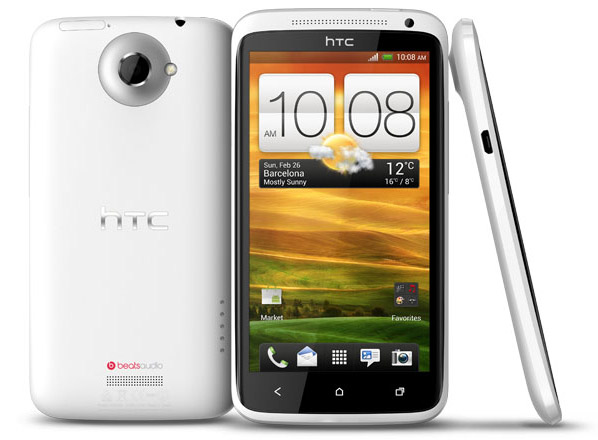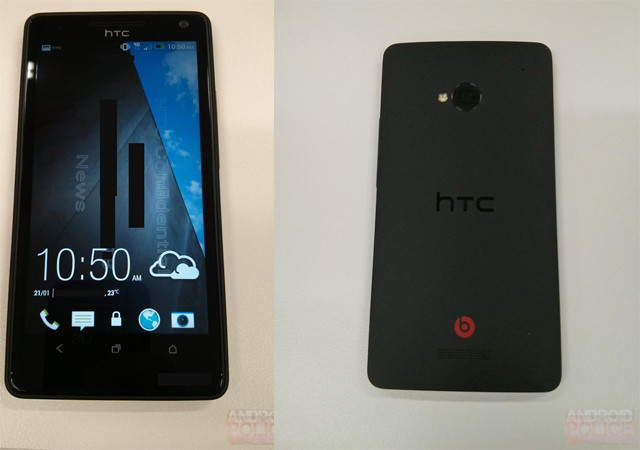With HTC set to announce their latest flagship phone, the M7, this week at press conferences in London, New York City and Sydney, I feel that it’s time for a rant, explaining why I probably won’t buy it.
Like many others, I was a huge fan of HTC’s early work. My first Android phone was the HTC Magic, and the original Sense UI was a delight. Running on the Magic, it added multi touch, useful widgets, and a lot of polish that the early versions of Android sorely needed. The Desire was a cool phone that brought Android its first taste of polish and style, and with help from Telstra, it really helped kick-start Android’s success in Australia. The HTC HD2 is one of my favourite phones of all time, largely because of its sheer flexibility. The HD2 launched with Windows Mobile 6.5, and has since been hacked to run every version of Android under the sun, Windows Phone 7, and now even a full build of Windows RT. Since these early phones though, HTC have really gone downhill. Even their latest phones, the One series, which are beautifully-manufactured devices with excellent specs, have significant issues for which I have trouble forgiving HTC.
A history of HTC’s downfall
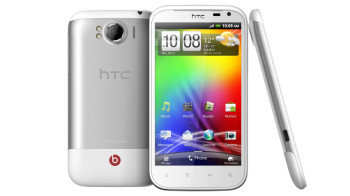
The Nexus One was HTC’s last device to ship with stock Android. It was highly praised for its hardware design, large (for those days) screen and powerful processor, but the phone was not without its flaws. HTC opted to build the phone with a Synaptics ClearPad 2000 touch screen, which was really only good for one-finger touch, but could recognise a second finger so long as the second input point was not aligned with the first. This made gaming very difficult, since most controls in touch-screen games are located across the bottom of the screen, and on the Nexus One, this would be completely unusable. Combined with the poor 3D performance of the Snapdragon QSD8250, the Nexus One was not a device built for gaming, and without the ability to play decent games, the Nexus One could only take Android so far.
After the Desire and the Nexus One, HTC’s phones dramatically lost their appeal, at least to me. Between April 2010 and November 2011, HTC released 16 phones into the Australian market — Legend, Wildfire, Aria, Desire HD, Desire Z, Incredible S, Desire S, Sensation, ChaCha, Salsa, Evo 3D, Velocity 4G, Rhyme, Explorer, Sensation XL and Sensation XE. HTC had so many phones on the market that even many enthusiasts couldn’t tell you the differences between each model. On top of the ridiculous number of devices they were releasing, HTC insisted on bloating out Sense. As stock Android became faster and prettier, Sense became bloated and slow, and with each iteration, Sense offered less and less over AOSP. For me, Sense lost out to AOSP at Gingerbread, and when Ice Cream Sandwich came out, Sense was its fat, ugly cousin who sits in the corner at birthday parties, creeping everyone out all night.

Finally, HTC saw some sense (pun intended), and realised that they were on their way to becoming the mayor of Irrelevant Town. They told the industry that they were going to focus on creating a great experience across a small range of devices, and that Sense would be blended into the general aesthetic of Android 4. When I first saw the One series of phones, I actually felt drawn to their refreshing design and state-of-the-art specs, and for a while it seemed that the real HTC were back. I eventually bought a One X, and while the design, camera and screen of the device are superb, I was still not completely satisfied with HTC’s ‘comeback’.
Why I still hate Sense
Although HTC toned down Sense’s gloss and gimmicks in version 4, which shipped on the One series with Ice Cream Sandwich, they still decided to shun Android’s ‘Holo’ interface in favour of their own glossy green-and white style. There is nothing wrong with Sense per se, and I like the light theme generally, but many of HTC’s design choices conflict with Android’s design guidelines and end up creating a fragmented user experience. Sense applications behave very differently to other Android applications, and this is not a good thing for users.

Firstly, Sense applications are not navigated in the same way as other Android applications. Android 4 introduced the lateral swipe as a gesture to switch between application tabs. These tabs are located at the top of the screen, below the action bar. Always. Except in Sense applications, where the tabs are located at the bottom of the screen and a lateral swipe will not switch between them. Tapping on one of the tabs at the bottom of the screen will switch tabs with a cool 3D animation (which is identical to the animation you see when switching home screens), misleading the user into thinking that a swipe will switch between tabs. This leads to a confusing and jarring experience that is annoying at the least, and phone-smashingly infuriating at its worst.
Secondly, HTC butchered Android’s action bar. For some reason, HTC thought that icons on the action bar weren’t obvious enough, and so they added labels to explain what each button does. It looks horrible, and again is inconsistent with the rest of Android. And thirdly, the gradient textures that HTC insist on slapping over everything may have been an improvement over the horrible, cheap-looking, cartoony interface of Android 1, but they have no place in modern versions of Android. Thankfully, if the leaked renders turn out to be accurate, Sense 5 looks to be much simpler and more fitting within Android’s UI aesthetic.
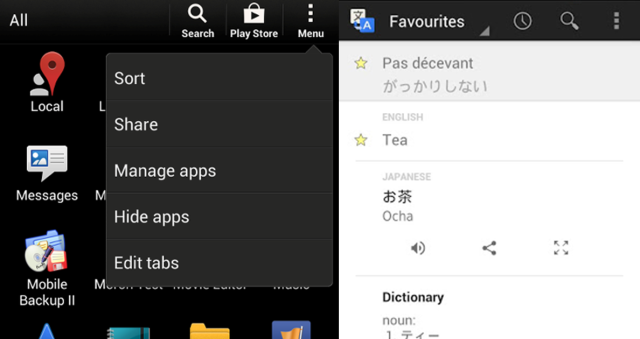
I will give credit to HTC for using Android 4’s proper button configuration, but I (and many others) question whether making them fixed hardware buttons was a good idea. With Ice Cream Sandwich, Google decided to remove the hardware button in an attempt to encourage developers to make their applications’ features more accessible by placing them on the new action bar. Unfortunately, not all applications were updated as quickly as Google would have liked, and it was not possible to do away with the legacy menu button completely. On devices with soft buttons, such as the Galaxy Nexus, this problem was dealt with by a context-sensitive menu button at the edge of the navigation bar. One HTC’s One series phones, which had a fixed button configuration, a bar would appear across the bottom of the screen to display the legacy menu button. While this approach did quickly call out applications that had yet to be updated, or refused to embrace Android’s new style, it was a poor design decision by HTC.
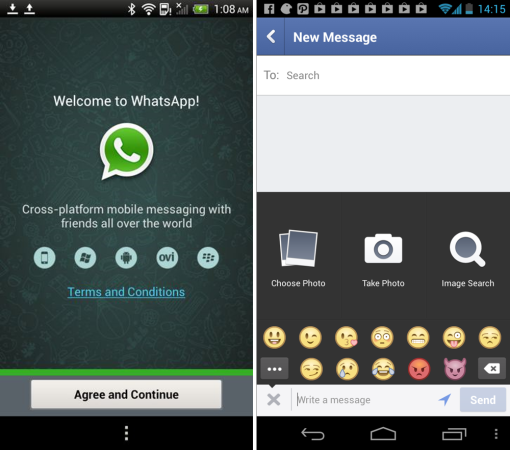
Although, if you were unlucky enough to buy an HTC Velocity 4G, which was released in Australia just two weeks before the One series was announced, none of the foregoing discussion is relevant to you at all. HTC did eventually update the Velocity 4G to Ice Cream Sandwich, but the update did not include Sense 4. Instead, the Velocity was given a horrible, Frankenstein’s monster of an update, which retained much of Gingerbread’s aesthetic, including Droid Sans as the default system font, rather than the new, and delightful, Roboto.
I’m sorry to say HTC, but you did not create a great user experience. If you’re going to try to spruce up Android, please don’t break it.
HTC do not support the community
When HTC started to actively lock down their devices’ bootloaders, there was outrage in the Android development community. So much so that HTC’s CEO Peter Chou personally announced that HTC would completely reverse the controversial decision, and allow users to unlock the bootloaders of their HTC devices. What Chou really meant, as it turned out later, was that HTC would try to make you sign your warranty away in exchange for an official unlock scheme that was completely unsatisfactory.
On Google’s Nexus devices, the bootloader can be unlocked easily — plug your device in, install drivers and type ‘fastboot oem unlock’ into a command prompt. Then you can flash your recovery of choice and relock the device with ‘fastboot oem lock’ to ensure that your device is secure. It’s worth noting that the only Nexus device where you cannot re-lock the bootloader was the HTC-built Nexus One.
Now, while you can unlock the bootloader on HTC’s devices, it’s a fairly restrictive unlock, in that you cannot flash boot image files through recovery. Unlike every other phone I’ve ever owned, where you can download an update.zip file, flash it to your phone and be on your merry way in under five minutes, flashing an update.zip on my One X requires me to flash the update.zip in recovery, reboot into fastboot mode, and then flash the boot image separately. Yes, you must tether your phone to your computer when flashing a new ROM or it will not work. If I unlock a phone, I don’t want to have to tether it to my desktop every time I want to flash an update.
While HTC have been messing about, annoying developers and losing market share, other OEMs such as Samsung and Sony have been trying to get the developer community on-side by providing devices and assistance to the larger third-party ROMS such as CyanogenMod so that the teams behind those ROMs are able to port them to new devices quickly. As a side note, Sony are the largest OEM contributor to AOSP, and recently, Sony developers worked with the CyanogenMod team to enable FM radio support on CM10.1. I love HTC’s hardware, but I don’t like Sense. I should be able to easily do away with the stock software and flash whatever custom ROM I want on my phone. The fact that HTC make me jump hoops to do something this simple makes me displeased. Very displeased.
Updates
HTC aren’t as bad as some OEMs, but the reality is that unless you buy their flagship phone, HTC will forget about you. When HTC announced the One series, I assumed that this trend had been put to rest. They only had three phones, so they’d all receive timely updates for their entire life cycle, right? Not exactly. HTC updated the One X and One S to Jelly Bean recently, but the One V was abandoned before even one update.
Another issue that HTC should have sorted out with the One series was the issue of releasing a flagship phone, and then releasing a slightly better model six months later. Consumers aren’t going to fork out $600, or sign up for a two-year contract for a device that’s going to be obsolete within 6 months. HTC promised us that they would focus on fewer releases with the One series. Then six months later, they released the One X+, gaining the ire of everyone who’d bought a One X previously. The One X was a great phone, but the One X+ was better. Samsung’s flagship phone is the Galaxy S. Samsung release one Galaxy S phone every year, and people love them. If you buy a Galaxy S, you know that your phone will be the latest and greatest thing for the next 12 months. Same with Apple’s iPhone. HTC, please get your act together. Build a great phone, release it and stick with it.
What I hope to see from HTC going forward
Even though I’m fairly critical of HTC, it’s only because I have high expectations. HTC’s industrial design is among the best in the industry and it’s a shame that they seem to be actively rejecting openness and choice, two of the things that make Android great. As far as Sense goes, there are some elements of it that I really like, such as the iconic clock and the fantastic camera application, but I wish that HTC would redesign it to with within the Android design guidelines. Samsung, Sony and Motorola have all demonstrated that it is possible to create your own unique brand, while still retaining the beautiful minimalism of Android 4, and I hope that with Sense 5, HTC manage to do the same. If the leaked screenshots turn out to be accurate, it seems like HTC have already realised this and are working towards better integration of their branding with the Android style.
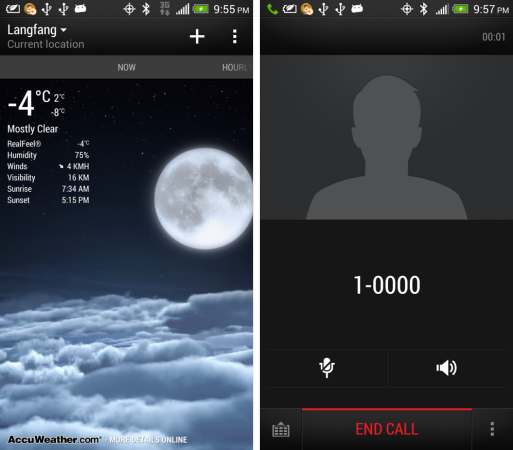
I’d like to see HTC engage with the developer community, and actually allow you to have full control over your phone. The way the bootloader unlock works on HTC phones is completely unsatisfactory. It allows any old Joe to unlock his or her phone, flash a custom ROM, and then not be able to boot it because the kernel is missing. This isn’t immediately obvious to the said Joe, and leads to heartache and devastation until they finally figure out what went wrong. What’s worse is that HTC do not make full factory images available, and the one place on the internet you could find them, HTCRUU.com, was recently shut down for infringing HTC’s trade mark rights. If you won’t give us a proper unlock, HTC, at least let us fix the device when we break it. A good way for HTC to start rebuilding their relationship with the developer community would be to allow all their devices to be properly unlocked, and to make factory images available for all their devices. At their press conference on Thursday, I’d very much like to hear HTC say three wonderful words — ‘fastboot oem unlock’.
I’ve already mentioned that I think HTC’s industrial design is fantastic — the One X is one of the most spectacular phones I’ve ever laid eyes on and its screen is the best I’ve ever seen. One thing I would like to see HTC do though is bring some colour to their Android devices. HTC’s new Windows Phones come in a range of vibrant colours, and I would love to see a phone as beautiful as the One X in a startling magenta. I would buy that phone in a heartbeat. It’s a shame that Android phones generally come in either black or white (with the exception of Samsung’s ghastly ‘pebble blue’ Galaxy S III), and hopefully HTC will bring something different to the table.
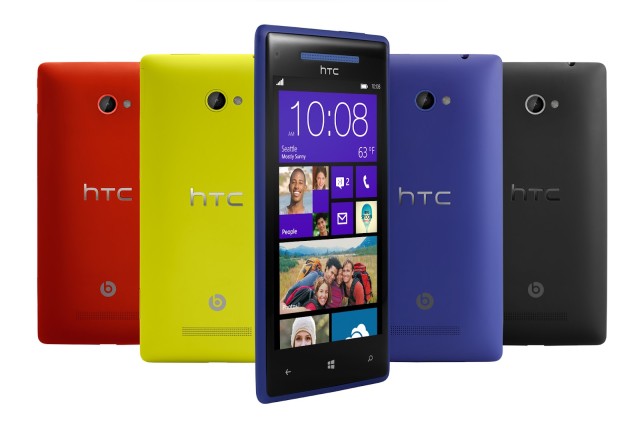
Summary — the M7 of my dreams
I’ve gone into detail above about the things about HTC’s phones that irk me, so now let me identify the key things I’d like to see from the M7 next week:
- Colours. HTC make beautiful phones with great hardware, but they’d be so much more awesome if they came in different colours.
- A proper bootloader unlock, like on Nexus phones. I don’t want to have to tether my phone to a PC to update my ROM.
- Make Sense fit within the Android design guidelines. Android is pretty now, you don’t need to completely redesign everything.
- Quick update turnaround. I don’t want to have to wait six months for every minor update.
- Market the hell out of the phone. Samsung and Apple both advertise their phone everywhere, and they’re the market leaders. HTC, take note.
- Please, please, please don’t release a M7+ in six months time. Wait a year and make the improvements worthwhile.
HTC if you do these things, I will take back all my criticisms and praise you from the rooftop. If you go ahead and make another phone that never gets updates, has a restrictive bootloader and yet another bloated, laggy version of Sense, I’m sorry, but you will be dead to me.
Are you interested in the HTC M7? Why? Why not? Let us know in the comments.

